Day 170 This past week was our last week of work for the season. To summarize:
Picked 2715 acres of cotton, for a total of 176 modules.
Our average was 17 tons per module for a total of 2992 tons
Around 28 bales per module that's 4928 bales of cotton.
Price of $500 per bale for a total of $2,464,000 in cotton (Currently it's only around $400 per bale)
Had the chance to drive 3 different tractors, an '84 and '00 Case and an old '70 Deutz D120, as well as a John Deere 9976 Cotton Picker.
The week was not with out some excitement as we seen one of our busiest day for pigging. Seen about 25 through out the day. It was a huge distraction as we were still picking and spraying for weeds. We also didn't work as hard as earlier in the year only putting in 8 or so hours a day. During one of the trips up the paddock Greg found 17 abandoned Emu eggs. He knew someone that carved them so we drilled and blew them out. It was kinda gross as some of the eggs smelled pretty bad. We also went to a clearing sale. The items for sale were pretty old and rusty, mostly ancient farm equipment and surprisingly a lot of junk like scrap steel and parts of this-n-that, nevertheless it was fun to see the auction part.
On Sunday the seven of us went out for dinner to a new local Indian restaurant. The Masala Hut opened a little while ago and neither us or them had tried it so we thought it would be a nice diner before we left. The food was fantastic. They had what they called a banquet where for a certain price per person we could try some of their most popular dishes. We tasted a few different kind of Naan bread, Samosas, Curry beef, some kind of lamb and a few different kind of chicken dishes. Our two favorites were definitely the Pika Masala and Mango chickens. It was a BYO restaurant so we brought a couple bottles of wine to go with dinner. It really was a good time.
Monday Greg got us in for a visit to the cotton gin in Dalby. It worked out perfect as it was his cotton that was getting ginned. I also picked up my wedding ring that I lost in the very first module that we built four months ago. The factory tour was extensive, it's come a long way from picking the seeds out by hand. First the modules are lined up and fed into a machine that breaks them down and fluffs them back out. The fluffed cotton moves down a conveyor belt and magnets
remove anything metallic. Then the cotton gets blown up a chute, here the heavy scrap like cell phones and wallets that might be in there get left behind. It now enters the ginning machine from the top. Spindles with small close together teeth separate the organic garbage like stalk, leaves etc. and also remove the seeds. All that's left now is the cotton lint. This now gets pressed into 2x2x4 foot, 230kg bales by a huge underground press. Then a sample is taken to grade each bale, followed by bagging and tagging, before it's put outside for shipping. In total it takes them 20 minutes from start to finish to gin a module.
The next couple of days we spent loitering around the farm, getting our house cleaned and the van loaded up and ready to go.
Over & Out
Wednesday, August 08, 2012
 Chinchilla, Queensland, Australia
Chinchilla, Queensland, Australia
Other Entries
-
39Serenity
Jun 1257 days prior Injune, Australiaphoto_camera28videocam 1comment 0
Injune, Australiaphoto_camera28videocam 1comment 0 -
40Cold As Ice
Jun 1653 days prior Chinchilla, Australiaphoto_camera19videocam 0comment 4
Chinchilla, Australiaphoto_camera19videocam 0comment 4 -
41Work...Hunt...Work...Hunt
Jun 2643 days prior Chinchilla, Australiaphoto_camera3videocam 0comment 0
Chinchilla, Australiaphoto_camera3videocam 0comment 0 -
42Rain Delay
Jun 3039 days prior Chinchilla, Australiaphoto_camera9videocam 0comment 0
Chinchilla, Australiaphoto_camera9videocam 0comment 0 -
43Off To See...
Jul 0237 days prior Ipswitch, Australiaphoto_camera0videocam 0comment 0
Ipswitch, Australiaphoto_camera0videocam 0comment 0 -
44Silver Platter
Jul 0336 days prior North Tamborine, Australiaphoto_camera16videocam 0comment 1
North Tamborine, Australiaphoto_camera16videocam 0comment 1 -
45Hiking & Tasting
Jul 0435 days prior North Tamborine, Australiaphoto_camera19videocam 0comment 0
North Tamborine, Australiaphoto_camera19videocam 0comment 0 -
46Glow In The Dark
Jul 0534 days prior Surfers Paradise, Australiaphoto_camera15videocam 1comment 1
Surfers Paradise, Australiaphoto_camera15videocam 1comment 1 -
473Cs (Coast, Casino, Comedy)
Jul 0831 days prior Chinchilla, Australiaphoto_camera5videocam 1comment 0
Chinchilla, Australiaphoto_camera5videocam 1comment 0 -
48Aaaaaaagh!
Jul 1623 days prior Goomeri, Australiaphoto_camera6videocam 0comment 0
Goomeri, Australiaphoto_camera6videocam 0comment 0 -
49Wine Tour
Jul 1722 days prior Tewantin, Australiaphoto_camera19videocam 0comment 1
Tewantin, Australiaphoto_camera19videocam 0comment 1 -
50Little Wet
Jul 1821 days prior Noosa Heads, Australiaphoto_camera3videocam 0comment 0
Noosa Heads, Australiaphoto_camera3videocam 0comment 0 -
51Ginger & Nuts
Jul 1920 days prior Yandina, Australiaphoto_camera11videocam 0comment 1
Yandina, Australiaphoto_camera11videocam 0comment 1 -
52Mostly Pics
Jul 2019 days prior Coolum Beach, Australiaphoto_camera18videocam 0comment 0
Coolum Beach, Australiaphoto_camera18videocam 0comment 0 -
53Aussie Bust
Jul 2118 days prior Caloundra, Australiaphoto_camera5videocam 0comment 0
Caloundra, Australiaphoto_camera5videocam 0comment 0 -
54Crikey!!!!
Jul 2217 days prior Beerwah, Australiaphoto_camera27videocam 6comment 4
Beerwah, Australiaphoto_camera27videocam 6comment 4 -
55Fired!
Jul 2613 days prior Chinchilla, Australiaphoto_camera15videocam 1comment 0
Chinchilla, Australiaphoto_camera15videocam 1comment 0 -
56Over & Out
Aug 08 Chinchilla, Australiaphoto_camera13videocam 0comment 0
Chinchilla, Australiaphoto_camera13videocam 0comment 0 -
57Alternate Ending
Aug 091 day later Theodore, Australiaphoto_camera0videocam 0comment 0
Theodore, Australiaphoto_camera0videocam 0comment 0 -
58Rocky Road To Rocky
Aug 113 days later Rockhampton, Australiaphoto_camera8videocam 0comment 0
Rockhampton, Australiaphoto_camera8videocam 0comment 0 -
59Hotel Living
Aug 157 days later Rockhampton, Australiaphoto_camera5videocam 0comment 1
Rockhampton, Australiaphoto_camera5videocam 0comment 1 -
60Taxes N Tatas
Aug 168 days later Emu Park, Australiaphoto_camera3videocam 0comment 0
Emu Park, Australiaphoto_camera3videocam 0comment 0 -
61Croc Farm & Emu Park
Aug 179 days later Yeppoon, Australiaphoto_camera18videocam 0comment 1
Yeppoon, Australiaphoto_camera18videocam 0comment 1 -
62Didn't Quite Make It
Aug 1911 days later Carmila, Australiaphoto_camera15videocam 0comment 0
Carmila, Australiaphoto_camera15videocam 0comment 0 -
632034 & The Bible
Aug 2113 days later Mackay, Australiaphoto_camera8videocam 0comment 0
Mackay, Australiaphoto_camera8videocam 0comment 0 -
64Orchids & Soldier Crabs
Aug 2315 days later Mackay, Australiaphoto_camera8videocam 1comment 1
Mackay, Australiaphoto_camera8videocam 1comment 1 -
65Ella, Ella, Eungella
Aug 2416 days later Eungella, Australiaphoto_camera11videocam 0comment 1
Eungella, Australiaphoto_camera11videocam 0comment 1 -
66Platypus Man
Aug 2517 days later Shoal Point, Australiaphoto_camera10videocam 1comment 0
Shoal Point, Australiaphoto_camera10videocam 1comment 0 -
67Million Dollar Horses
Aug 2719 days later Shoal Point, Australiaphoto_camera19videocam 0comment 2
Shoal Point, Australiaphoto_camera19videocam 0comment 2 -
68Invisible Falls
Aug 2921 days later Airlie Beach, Australiaphoto_camera9videocam 0comment 0
Airlie Beach, Australiaphoto_camera9videocam 0comment 0 -
69Vacation On A Holiday
Aug 3123 days later Shute Harbour, Australiaphoto_camera55videocam 0comment 4
Shute Harbour, Australiaphoto_camera55videocam 0comment 4 -
70Home Ayr
Sep 0629 days later Ayr, Australiaphoto_camera16videocam 0comment 0
Ayr, Australiaphoto_camera16videocam 0comment 0 -
71Stranded In T'ville
Sep 0831 days later Townsville, Australiaphoto_camera10videocam 0comment 0
Townsville, Australiaphoto_camera10videocam 0comment 0 -
72Playoff Time
Sep 0932 days later Townsville, Australiaphoto_camera12videocam 0comment 0
Townsville, Australiaphoto_camera12videocam 0comment 0 -
73Wallaman & Jetty
Sep 1033 days later Ingham, Australiaphoto_camera13videocam 0comment 0
Ingham, Australiaphoto_camera13videocam 0comment 0 -
74Mission Complete
Sep 1134 days later Mission Beach, Australiaphoto_camera7videocam 0comment 0
Mission Beach, Australiaphoto_camera7videocam 0comment 0

 Chinchilla, Queensland, Australia
Chinchilla, Queensland, Australia
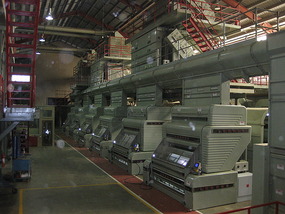

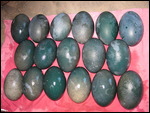

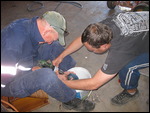
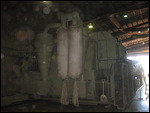
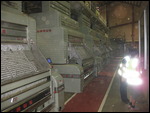

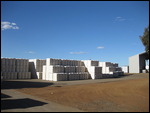

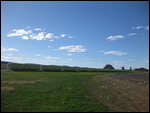
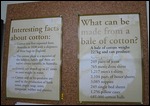

2025-05-23